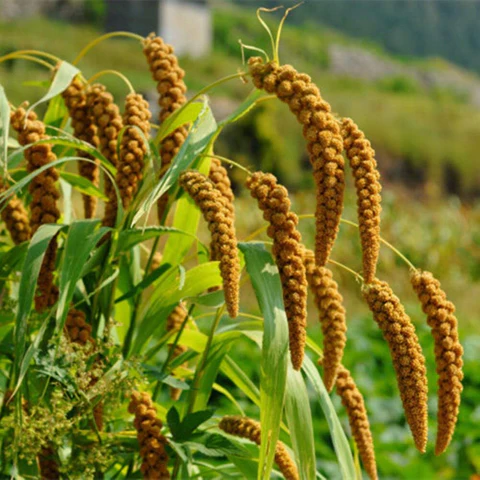
India is the largest producer of millets in the world. Millets are a group of small-seeded cereal grains. They are called superfoods as they are rich in macro and micronutrient. The year 2023 has been declared the UN International Year of Millets so as to create awareness about these superfoods and encourage their consumption. They are a group of planet-friendly crops as they possess superior climate resilience properties and require fewer inputs. Let's learn about a few millet varieties.
KODO MILLET
A millet indigenous to India, the kodo millet is hardy and drought-resistant. It is a good source of protein and dietary fibre. It is said to have been domesticated some 3000 years ago. The millet is grown mostly by the tribal communities of Odisha, Telangana and Andhra Pradesh.
FOXTAIL MILLET
Also called kangni, the foxtail millet is a drought-resistant crop. It is largely grown in Rajasthan, UP, Haryana, and the drylands of the Deccan Plateau. When compared to mainstream cereals, foxtail millet is highly nutritious. It is a rich source of protein and has a good amount of fat and fibre. Foxtail millet originated in China. The crop has a very short growth cycle.
LITTLE MILLET
A small-grained cereal crop, the little millet is also called kutki. It is largely cultivated as a cereal across India, Nepal, and western Myanmar. This crop can withstand both drought and waterlogging. The little millet is native to India and is called "Indian millet. It's an excellent source of protein and fibre. Widely produced in States such as Tamil Nadu, Karnataka, and Andhra Pradesh, the little millet is used by many tribal communities.
FINGER MILLET
The finger millet is a powerhouse of nutrients. It packs in it a lot of protein, amino acids, calcium, minerals, fibre and iron. It also has low fat content. One of the most nutritious cereals, the finger millet does not contain gluten and is easy to digest. Also called ragi, the finger millet is grown mostly in Andhra Pradesh, Tamil Nadu, Maharashtra, and Karnataka. It is said to have been domesticated some 5000 years ago, at the beginning of the Iron Age in the highlands of Eastern Africa. Seen here is a tribal woman harvesting her new ragi crop.
BROWNTOP MILLET
A crop grown mostly in the southern parts of the country, the browntop millet also goes by the name korale. A crop native to South Asia, it is traditionally cultivated as a cereal crop. It has a high nutritional value and is rich in fibre, iron, calcium, potassium, and magnesium. As it requires less energy input, it leaves a lower carbon footprint in agriculture. Seen here is a field carpeted with ready-to-harvest browntop millet.
BARNYARD MILLET
Grown mostly in the regions of Uttar Pradesh, Bihar and Haryana, the barnyard millet is a drought-resistant crop. It is also called sanwa. Barnyard millet is a good source of protein, carbohydrates, and fibre. It also contains more micronutrients such as iron and zinc. Despite the fact that this crop can withstand adverse weather conditions much better than other cereals and has excellent nutritional and agronomic value, it is still an underutilised crop. Indian barnyard millet and Japanese barnyard millet are the two popular varieties of this millet species. The oldest archaeological records of the cultivation of Indian barnyard millet date back to 5000 B.C in India. Japanese millet is believed to have originated in Japan.
PEARL MILLET
One if the most widely grown crops in India, the pearl millet is also called bjra. In fact, it is the fourth most widely cultivated food crop after rice, wheat, and maize. It is grown majorly in areas such as Rajasthan, Maharashtra, Gujarat and Haryana. This is an easy-to-digest cereal grain and is considered important due to its climate- resilent nature. It is draught resistant and can easily be cultivated in regions having not-so-good agro climatic conditions such as low and erratic rainfall, high mean temperature, infertile soil, and so on. It has its origins in West Africa, with the oldest usage dating back to 1000 BC. It is also used as feed and fodder for livestock.
Picture Credit : Google




